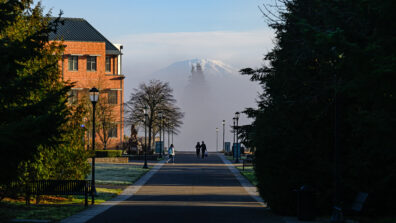Dear Natalie,
If you draw with a pencil, you can tell how soft the graphite inside is. Pieces of graphite break off to leave the pencil mark. But can you imagine drawing with a diamond? Diamonds and graphite are both what you might call rocks. How come they’re so different?
To find out, I talked to my friend Katie Cooper, a geologist and associate professor in the Washington State University School of the Environment. Geologists often study how different types of rocks and minerals form—and that’s the secret to whether they’re easy or hard to break.
Rocks are made of minerals, and minerals are made of elements, which are substances made of a single type of atom. You can get to know the Earth’s elements by looking at a Periodic Table.
Some minerals are made of a single element, like diamond and graphite, which are both made of carbon. Others are a mix, like limestone, which is made of calcium and carbon.
Read More ...

